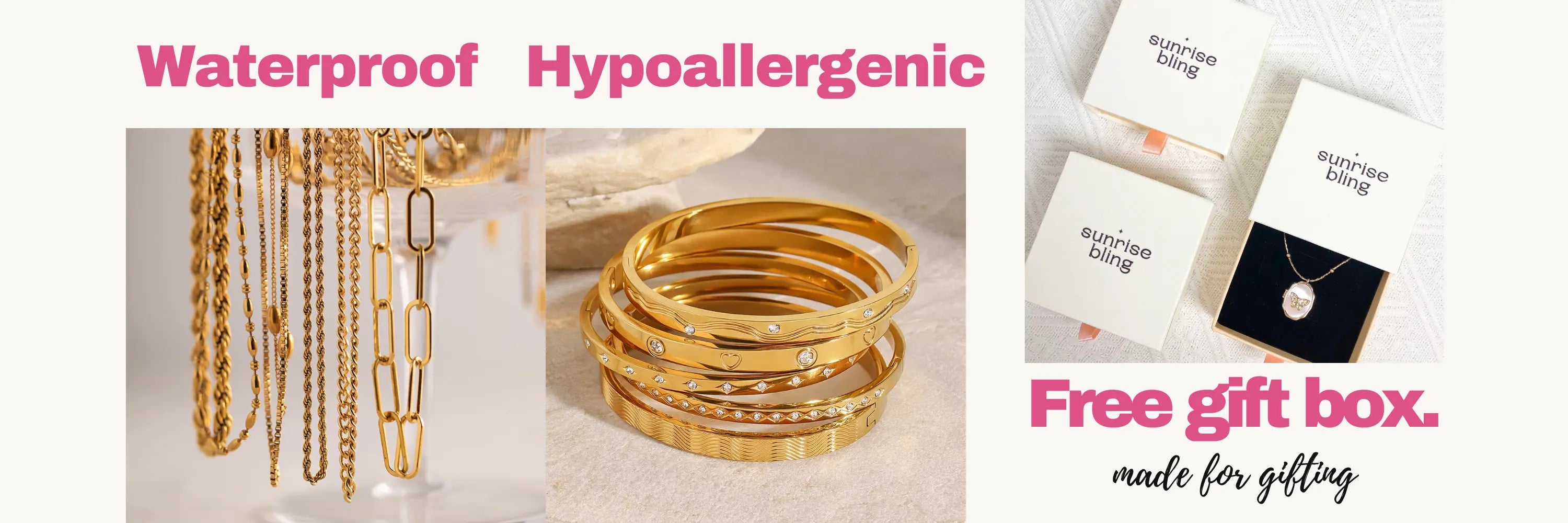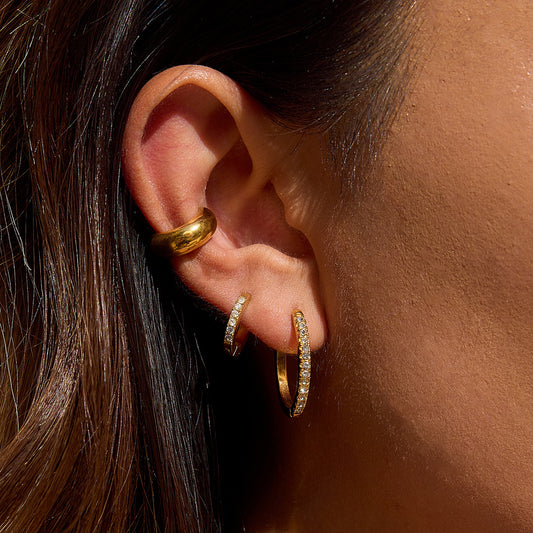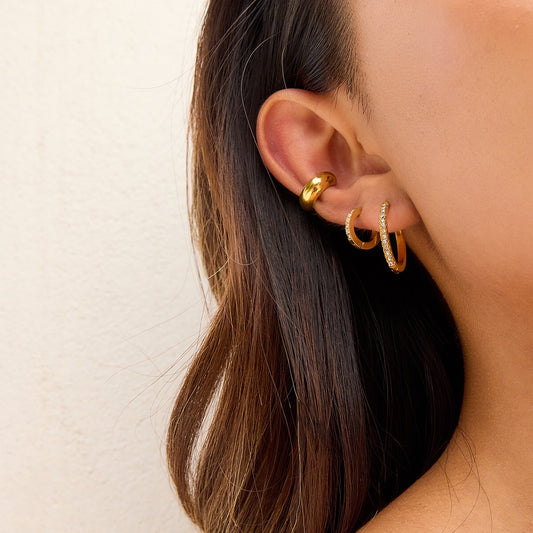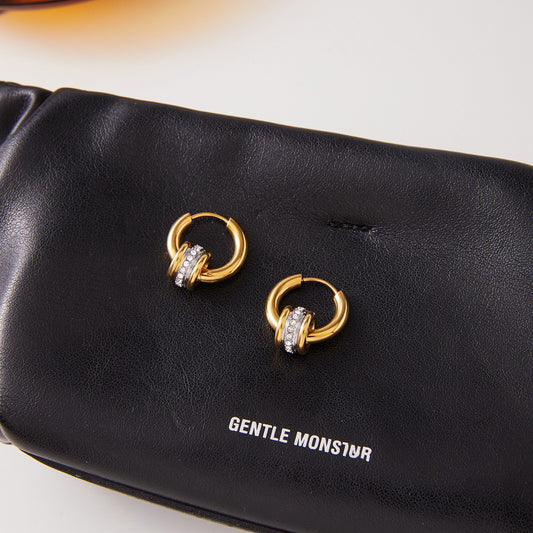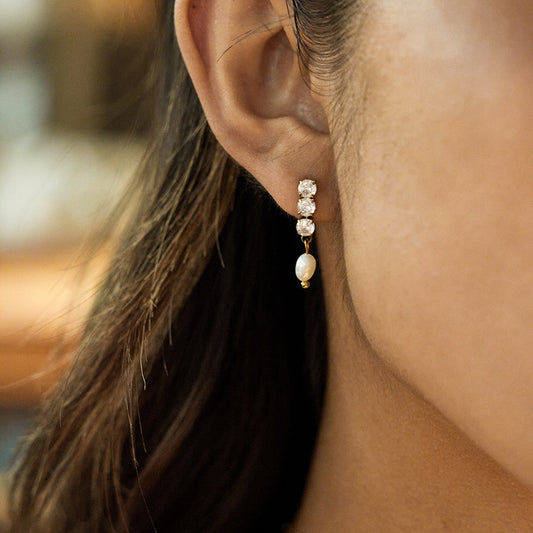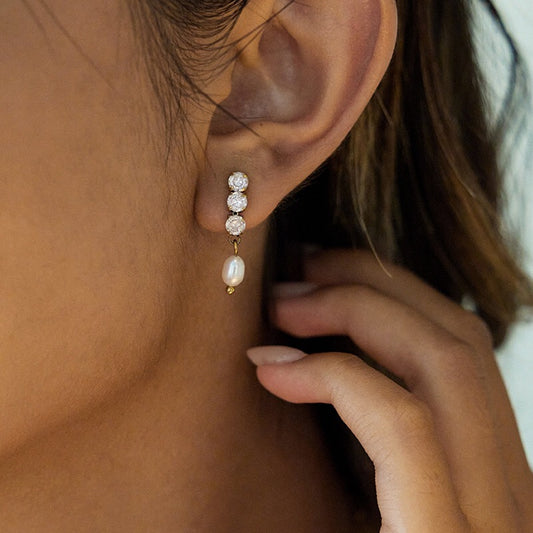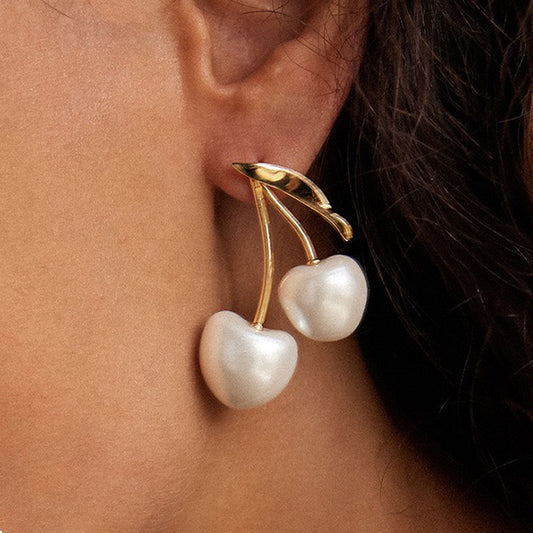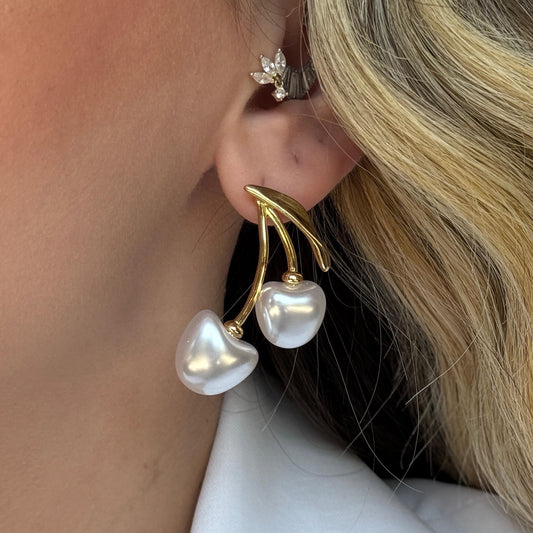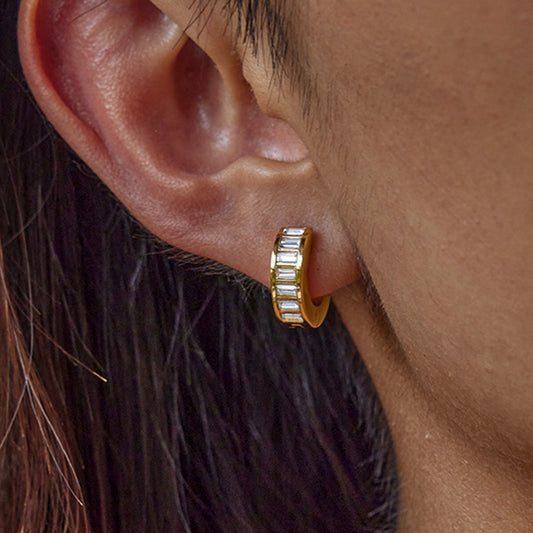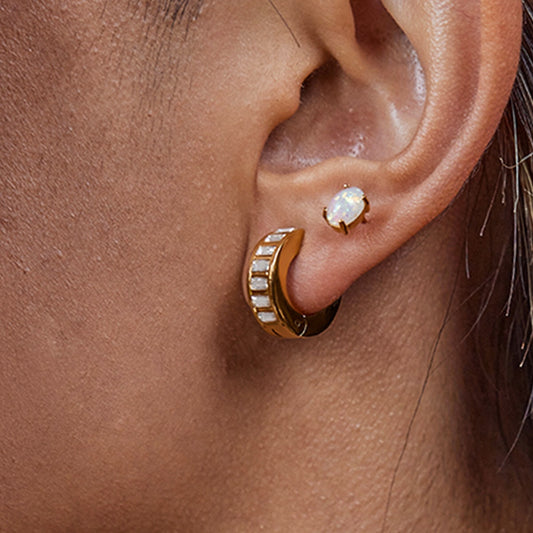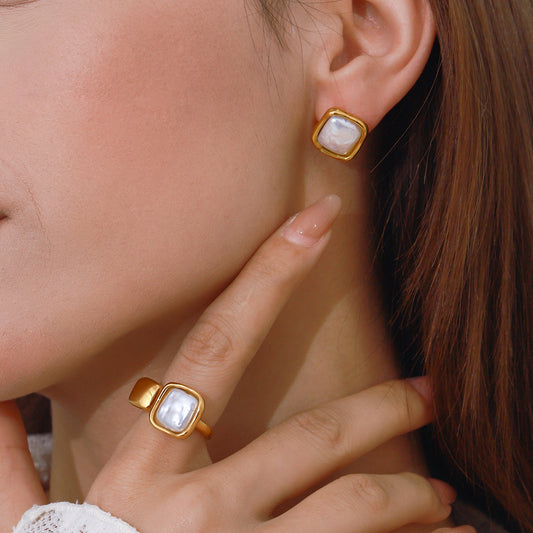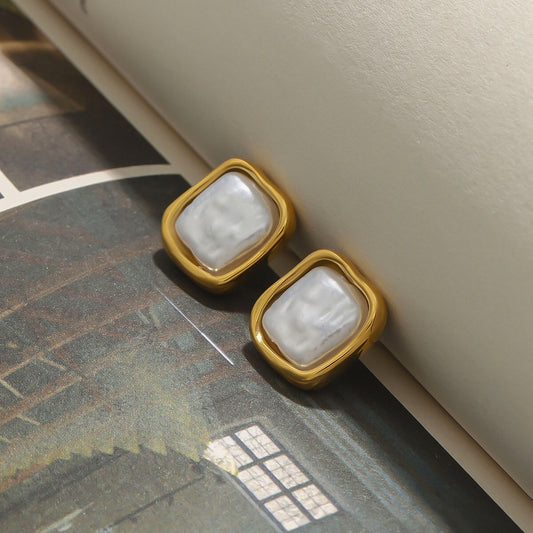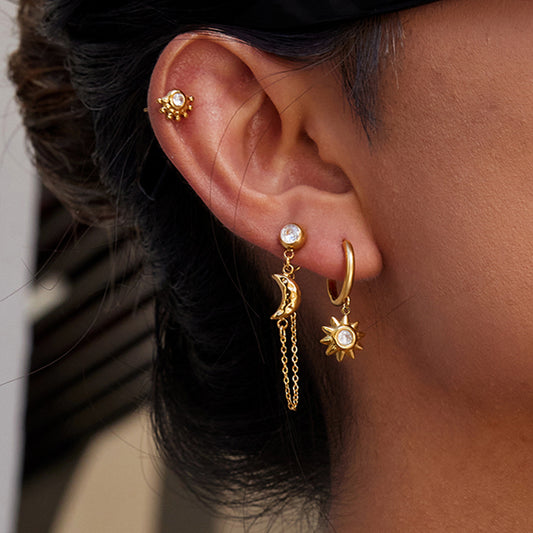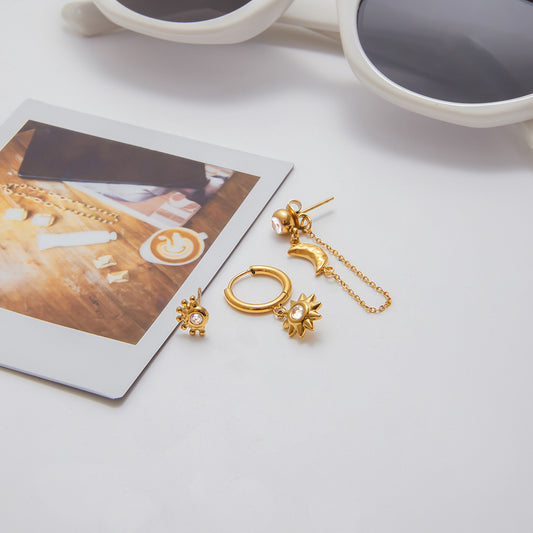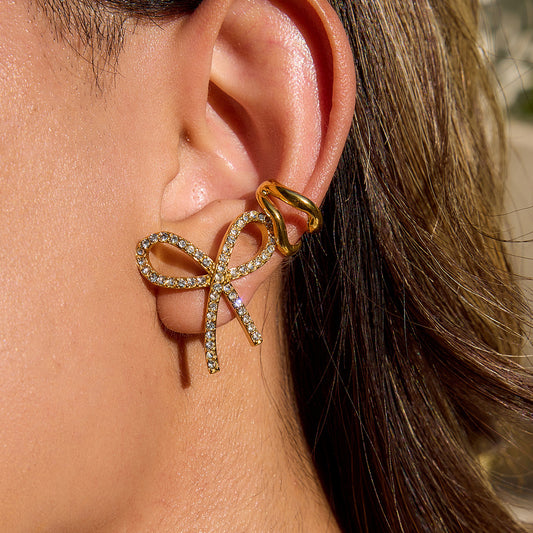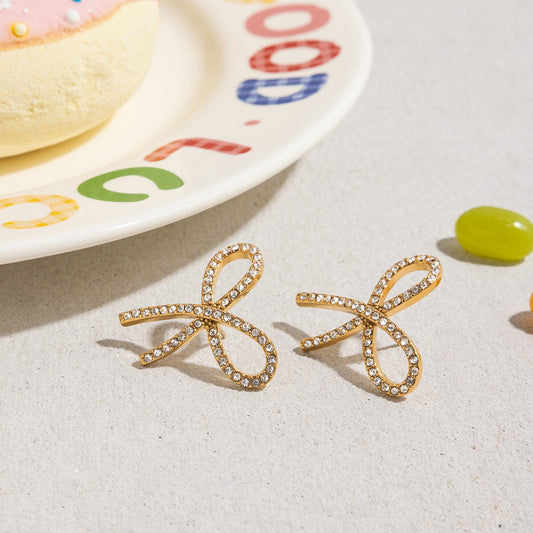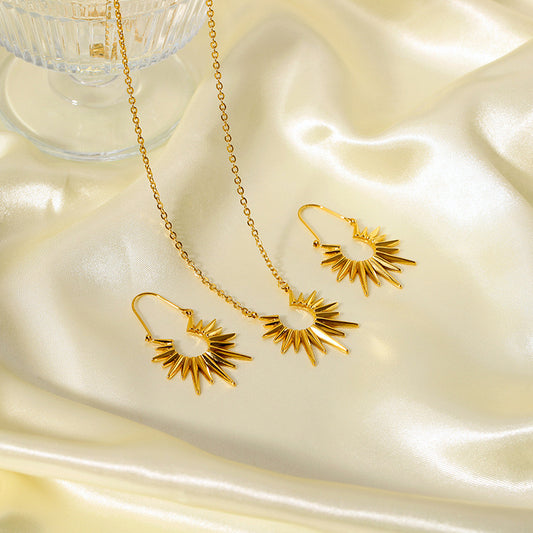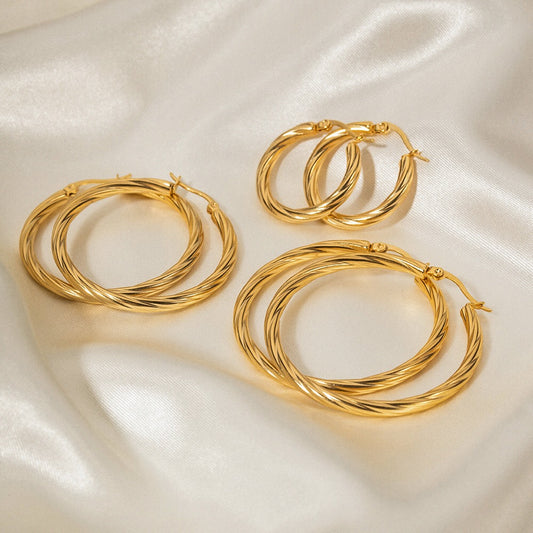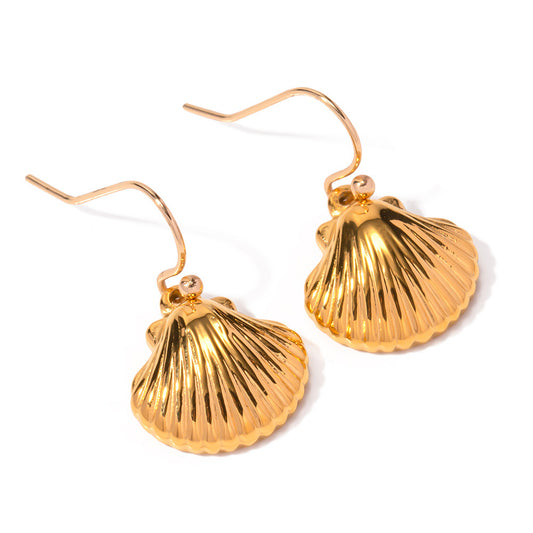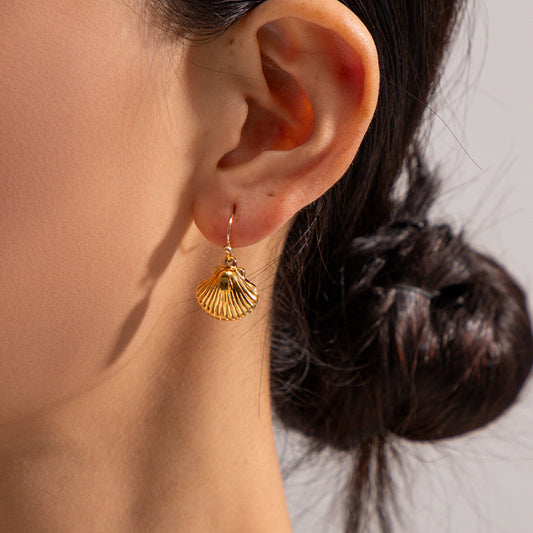Sapphire earrings have long been a staple in luxury jewelry collections, living up to their promise of “rich blue sparkle for every look” with their vivid hue and versatile design. Sapphire Jewelry Market size is estimated to be USD 10.5 Billion in 2024 and is expected to reach USD 15.2 Billion by 2033 at a CAGR of 4.9%. What makes these earrings stand out? Unlike fleeting trends, sapphires’ deep, saturated blue (the result of trace elements like iron and titanium) adds a touch of elegance to any outfit: they elevate casual jeans and a tee, complement professional workwear, and shine alongside formal gowns. Whether you prefer delicate studs or bold hoops, sapphire earrings blend timeless glamour with everyday wearability. Let’s explore what defines sapphire earrings, why they’re beloved, and how to choose, style, and care for these stunning pieces.
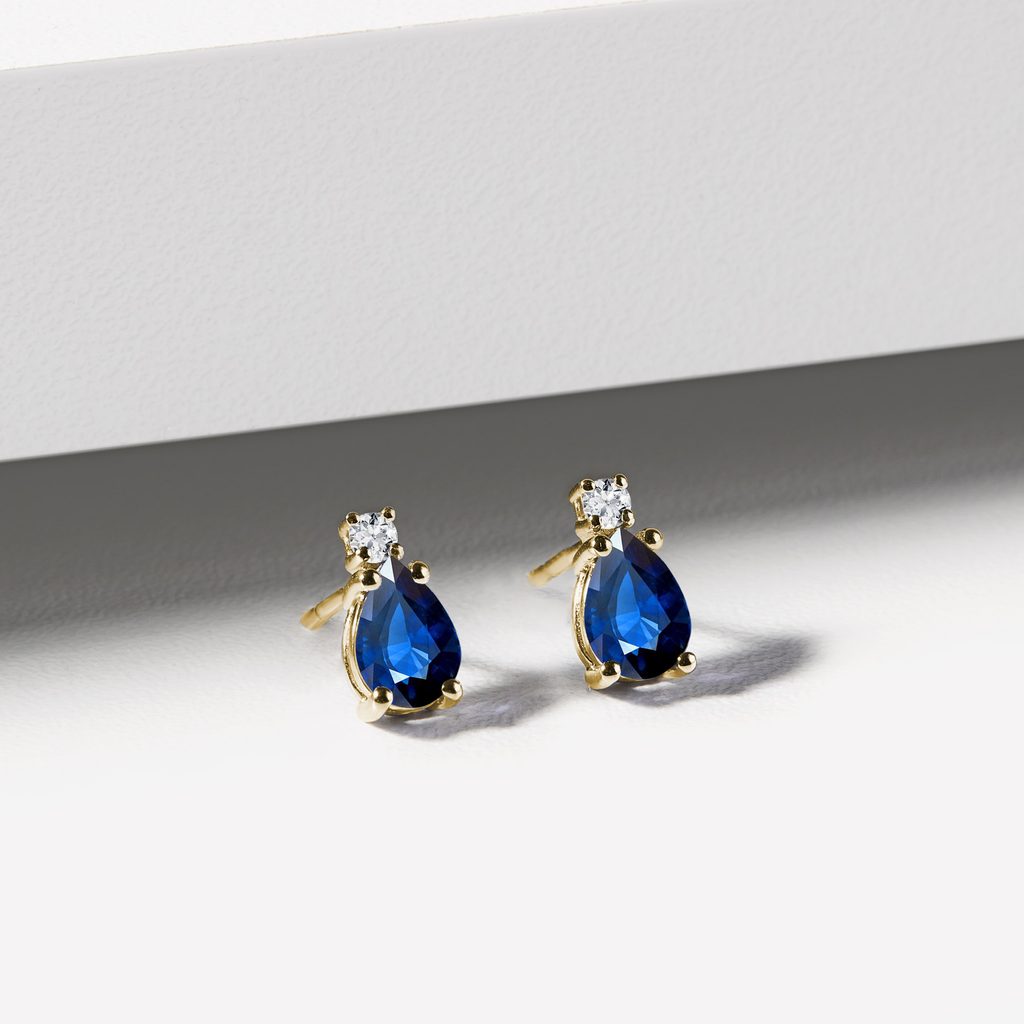
What is Sapphire Earrings
Definition and Core Characteristics
Sapphire earrings are jewelry pieces featuring one or more sapphire gemstones set in a metal frame (typically gold, white gold, platinum, or sterling silver) designed to be worn on the earlobes (or ear cartilage for trendy styles). The “sapphire” label refers to the gemstone’s identity—a variety of the mineral corundum, second only to diamonds in hardness (Mohs scale 9), making it durable for daily wear. Key traits include:
-
Sapphire Gemstone: Most commonly known for their rich blue color, but sapphires also come in “fancy” hues (pink, yellow, green) — though blue sapphires dominate earring designs for their iconic appeal. High-quality blue sapphires have uniform saturation (no patchy light/dark areas) and minimal inclusions (internal “birthmarks”).
-
Metal Setting: The frame’s material complements the sapphire’s blue: white gold/platinum amplifies cool undertones, yellow gold adds warmth, and rose gold creates a romantic contrast. Settings range from simple prongs (to maximize sparkle) to intricate bezels (for extra protection).
-
Earring Backs: Secure closures like push-backs (for studs), lever-backs (for hoops), or screw-backs (for heavier designs) ensure the earrings stay in place—critical for protecting the valuable sapphires.
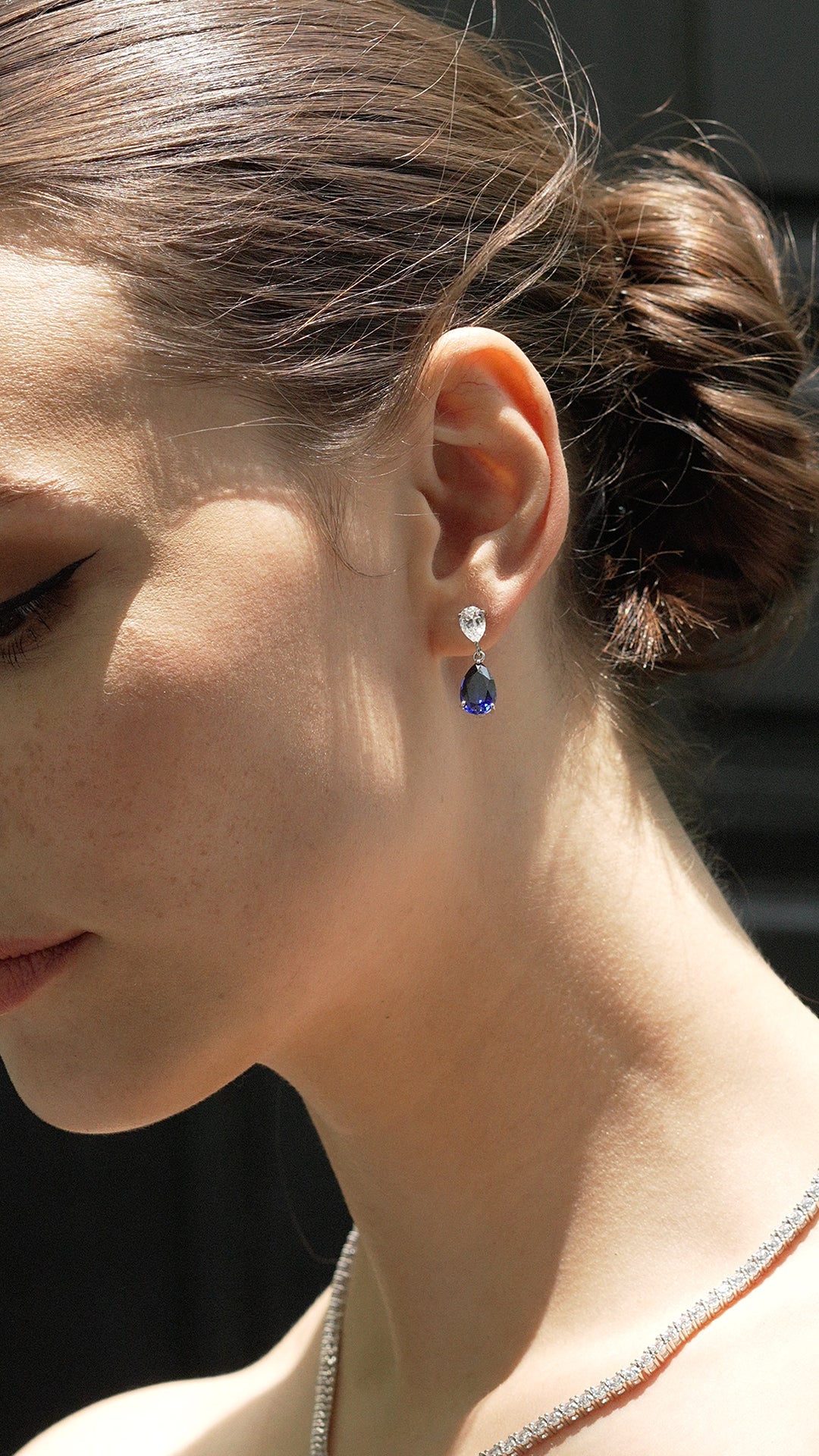
Types of Sapphires Used in Earrings
Not all sapphires are the same—their origin and quality impact their “rich blue sparkle” and value. The most popular types for sapphire earrings include:
-
Ceylon Sapphires (Sri Lanka): Known for their bright, “cornflower blue” hue—lighter and more vibrant than other varieties. Ideal for delicate stud earrings, as their color pops without being overwhelming.
-
Burma Sapphires (Myanmar): Considered the “premium” choice, with a deep, velvety blue (often called “royal blue”). Rare and costly, they’re perfect for statement earrings (e.g., drop or chandelier styles) meant for special occasions.
-
Australian Sapphires: Feature a darker, teal-tinged blue (called “navy blue”). More affordable than Ceylon or Burma sapphires, making them great for everyday earrings like hoops or small drops.
-
Lab-Grown Sapphires: Created in a controlled laboratory with the same chemical composition as natural sapphires. Offer consistent “rich blue sparkle” and fewer inclusions, at 30–50% the cost of natural sapphires—ideal for budget-conscious shoppers.
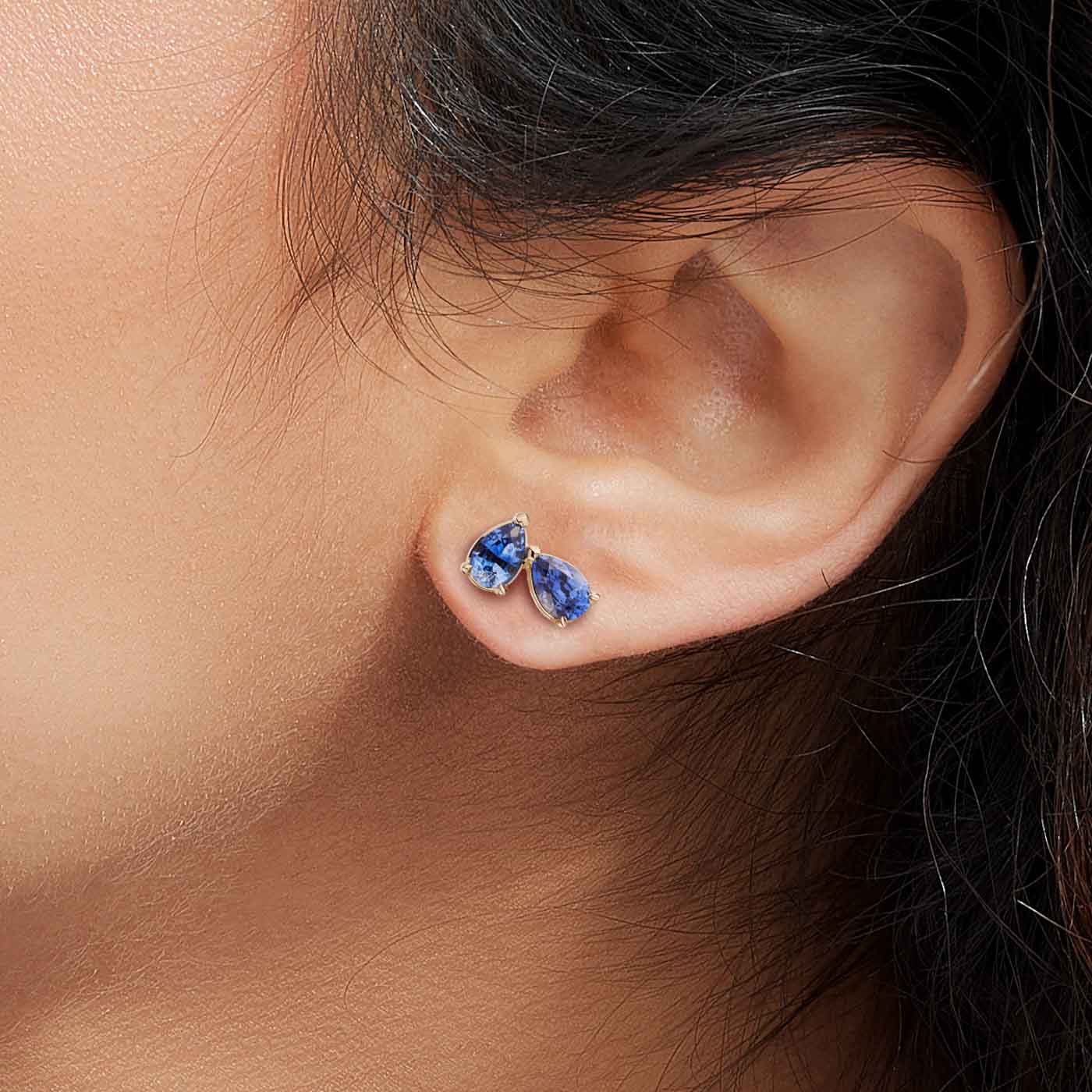
How Sapphire Earrings Differ from Other Colored Gemstone Earrings
Sapphire earrings stand out from other colored gemstone earrings (e.g., emerald, ruby) due to three key factors:
-
Durability: With a Mohs hardness of 9, sapphires are far more scratch-resistant than emeralds (7.5–8) or pearls (2.5–4), making them suitable for daily wear (even for active users).
-
Color Versatility: Blue sapphires complement every skin tone (warm, cool, neutral) and outfit color—unlike emeralds (which clash with some warm tones) or rubies (which can feel too bold for casual looks).
-
Symbolism: Sapphires are associated with loyalty, wisdom, and longevity—making them meaningful for gifting (e.g., mother’s day, anniversaries) in a way that other gemstones (e.g., peridots, which symbolize summer) don’t match.
Why is Sapphire Earrings so popular
“Rich Blue Sparkle for Every Look” Core Appeal
The top reason sapphire earrings are popular is their ability to deliver “rich blue sparkle for every look.” The sapphire’s deep blue is instantly recognizable and universally flattering:
-
Casual Wear: A small pair of sapphire studs adds a touch of luxury to a white tee and jeans—no over-the-top flair, just subtle “sparkle” that elevates the outfit.
-
Work/Professional: Delicate sapphire drop earrings (with tiny gemstones) complement a blazer and tailored pants—polished enough for meetings, but not distracting.
-
Formal Events: Bold sapphire chandelier earrings or hoops with diamond accents turn a little black dress into a showstopper—their “rich blue” stands out against dark fabrics.
This versatility means you can invest in one pair of sapphire earrings and wear them across all occasions, rather than buying multiple accessories.

Timeless Elegance That Never Goes Out of Style
Unlike trendy jewelry (e.g., neon beaded earrings, chunky plastic hoops) that fades from fashion, sapphire earrings have been popular for centuries—and they’ll remain stylish for years to come. Royal families (e.g., the British Royal Family, with Princess Diana’s iconic sapphire engagement ring) have long favored sapphires, cementing their status as a “timeless” gemstone. A pair of sapphire studs from the 1950s looks just as elegant today as it did decades ago, making them a wise investment for long-term wear.
Meaningful Symbolism for Gifting
Sapphires carry deep symbolic weight that resonates with gift-givers and recipients alike:
-
Loyalty and Love: Sapphires are often associated with enduring relationships—making them a perfect gift for anniversaries (especially the 45th “sapphire anniversary”) or to honor a close bond (e.g., mother-daughter).
-
Wisdom and Strength: Gifting sapphire earrings to someone celebrating a milestone (graduation, promotion) symbolizes your belief in their wisdom and strength—more meaningful than a generic gift.
-
Heritage and Legacy: Sapphire earrings are often passed down as family heirlooms, turning a piece of jewelry into a tangible link to family history. Their durability ensures they’ll last for generations to come.
Rarity and Luxury (Without the “Over-the-Top” Vibe)
Natural sapphires are rare (far less common than diamonds), which adds to their luxury appeal—but they don’t feel ostentatious. Unlike diamond earrings (which can feel too flashy for casual wear), sapphire earrings offer “rich blue sparkle” that’s elegant yet approachable. Even lab-grown sapphires, while more affordable, still carry the “luxury” label thanks to their beautiful color and association with high-end jewelry.

Popular styles of Sapphire Earrings
Sapphire Stud Earrings
The most classic style—features a single sapphire (per ear) set in a simple metal frame, with no extra gemstones.
-
Design: Sapphire sizes range from 0.25–2 carats; smaller sizes (0.25–0.5 carats) are ideal for daily wear, while larger sizes (1+ carats) work for formal events. Settings are usually prong (4–6 prongs to hold the sapphire) or bezel (metal wraps around the gem for protection).
-
Why It’s Popular: Highlights the sapphire’s “rich blue sparkle” without distractions. Minimalist and versatile—works for every occasion, from running errands to weddings.
-
Best For: Everyday wear, gifting to someone new to sapphire jewelry, or as a “forever” piece for your collection.
Sapphire Drop Earrings
Features a sapphire (or multiple sapphires) suspended from a metal chain or bar, hanging 1–3 inches below the earlobe.
-
Design: Available in simple styles (one sapphire on a thin chain) or elaborate designs (multiple small sapphires in a line or cluster). Some include diamond accents to amplify sparkle.
-
Why It’s Popular: Adds movement and elegance—every time you move, the sapphires catch light, creating dynamic “sparkle.” More formal than studs but still wearable for work (with small sapphires).
-
Best For: Date nights, work events, or weddings—strikes a balance between casual and glamorous.
Sapphire Hoop Earrings
A circular hoop (thick or thin) with sapphires set along the outer edge (or inner edge, for a subtle look).
-
Design: Hoop sizes range from small (1 inch in diameter, “huggie” style) to large (3+ inches). Sapphires can be pavé-set (closely spaced for continuous sparkle) or spaced evenly around the hoop.
-
Why It’s Popular: Combines the trendiness of hoops with the luxury of sapphires. Small huggie hoops work for daily wear, while large hoops make a statement at parties.
-
Best For: Trendy wearers, casual outings, or adding a bold touch to formal outfits.
Sapphire Chandelier Earrings
The most elaborate style—features multiple layers of sapphires (and often diamonds) that fan out from the earlobe, resembling a chandelier.
-
Design: Typically 2–4 inches long, with sapphires in various sizes and shapes (round, oval, pear). The metal frame is often intricate (e.g., filigree, milgrain edges) for extra glamour.
-
Why It’s Popular: Delivers maximum “rich blue sparkle”—perfect for red-carpet events or black-tie weddings. The layered design catches light from every angle, making it impossible to miss.
-
Best For: Formal events, galas, or as a showstopping gift for a milestone (e.g., 50th birthday, retirement).
How to wear Sapphire Earrings
Pairing with Outfits (By Occasion)
-
Everyday Casual:
-
Outfit: High-waisted blue jeans, a cream knit sweater, and ankle boots.
-
Sapphire Earrings: Small sapphire studs (0.25–0.5 carats) in white gold. The cool white gold complements the cream sweater, while the “rich blue sparkle” adds a pop of color to the neutral outfit—subtle enough for errands, but nice enough for coffee with friends.
-
Work/Professional:
-
Outfit: A charcoal blazer, a white silk blouse, and tailored black pants.
-
Sapphire Earrings: Delicate sapphire drop earrings (0.5 carats total) in yellow gold. The warm gold matches the blazer’s undertones, and the short drop (1 inch) keeps the earrings office-appropriate—no swinging or distraction during meetings.
-
Date Night:
-
Outfit: A black slip dress, strappy gold heels, and a small clutch.
-
Sapphire Earrings: Medium sapphire hoop earrings (1.5 inches) in rose gold. The rose gold adds romance, and the hoops’ sparkle catches the light—perfect for a night out. For extra glamour, choose hoops with tiny diamond accents.
-
Formal Event (Wedding/Gala):
-
Outfit: A floor-length emerald green gown or a silver sequined dress.
-
Sapphire Earrings: Sapphire chandelier earrings (1.5–2 carats total) in platinum. The platinum’s cool tone pairs beautifully with emerald green or silver, and the chandelier design adds drama without clashing with the gown.
Styling Tips for Different Face Shapes
Sapphire earrings can flatter every face shape—use these tips to choose the right style:
-
Round Faces: Opt for long, vertical styles like drop or chandelier earrings. They elongate the face, balancing its roundness. Avoid small studs or circular hoops (which can make the face look wider).
-
Oval Faces: Lucky you—all styles work! Try studs for casual wear, hoops for a trendy look, or chandeliers for formal events. Oval faces can pull off any sapphire earring design.
-
Square Faces: Choose soft, curved styles like round studs or oval drop earrings. They soften the face’s sharp angles. Avoid angular hoops or square-shaped sapphires (which emphasize squareness).
-
Heart-Shaped Faces: Go for wider styles at the bottom, like teardrop drop earrings or small hoops. They balance the face’s narrower chin and wider forehead. Avoid large earrings at the top (e.g., chandeliers with heavy top layers).
Pairing with Other Jewelry
Sapphire earrings pair beautifully with other jewelry—follow these rules to avoid overcrowding:
-
Necklaces: If wearing sapphire studs or small hoops, add a delicate necklace (e.g., a thin gold chain with a tiny pendant). If wearing bold sapphire hoops or chandeliers, skip a necklace (or wear a very thin, simple one) to keep the focus on the earrings.
-
Bracelets/Rings: Pair sapphire earrings with a sapphire ring (for a cohesive “set” look) or a plain metal bracelet (e.g., a thin silver bangle). Avoid wearing multiple colored gemstones (e.g., sapphire earrings + emerald bracelet)—it can look cluttered.
-
Metals: Stick to one or two metals. For example, if your sapphire earrings are in white gold, wear a white gold necklace or ring. Mixing gold and silver is okay for casual looks, but keep it to two metals max.
Sapphire Earrings: perfect gift for your mother
Symbolizes Gratitude and Love
Sapphire earrings are a perfect gift for your mother because they carry deep sentiment—beyond their “rich blue sparkle,” they’re a way to honor her loyalty, wisdom, and the enduring love she’s given you. Sapphires’ symbolism of “longevity” mirrors the lifelong bond between a mother and child, making the gift feel meaningful, not just decorative. Every time she wears the earrings, she’ll think of your gratitude—and that’s a gift no generic present can match.
Fits Her Style (No Matter What She Likes)
With so many sapphire earring styles, you can find one that matches your mother’s aesthetic—proving you pay attention to her taste:
-
Minimalist Mom: Small sapphire studs (0.25–0.5 carats) in sterling silver. Simple, elegant, and perfect for her daily routine (e.g., running errands, cooking, volunteering).
-
Glamorous Mom: Sapphire drop earrings with diamond accents in 14k gold. Sparkly enough for family weddings or church events, but still refined enough for her style.
-
Vintage-Loving Mom: A pair of retro-inspired sapphire hoop earrings (small, 1-inch diameter) in yellow gold. Speaks to her love of classic jewelry and adds character to her outfits.
-
Sentimental Mom: A custom pair of sapphire earrings with her birthstone (or your birthstone) as a small accent. Personalized and unique—celebrating your special connection.
Durable Enough for Her Daily Life
Mothers are busy—and sapphire earrings are tough enough to keep up. With a Mohs hardness of 9, sapphires resist scratches from cooking, cleaning, or playing with grandchildren. The metal settings (14k gold, sterling silver) are also durable, so the earrings won’t tarnish or break easily. Unlike delicate jewelry (e.g., pearl earrings) that needs careful handling, sapphire earrings can be worn daily without worry—she’ll reach for them again and again.
Celebrates Her Milestones
Sapphire earrings make thoughtful gifts for mother-specific milestones:
-
Mother’s Day: A small pair of sapphire studs—just enough “sparkle” to say “I love you” without being overly expensive.
-
Birthday (Milestones like 50th/60th): Sapphire chandelier earrings or a set of sapphire studs + a matching ring. A luxury gift to mark a special year.
-
Empty Nest/Retirement: A pair of sapphire hoops in her favorite metal. Celebrates her new chapter and the freedom to focus on herself.
-
Grandmotherhood: Sapphire earrings with small diamond accents—symbolizes the joy of welcoming a new grandchild and the wisdom she’ll pass down.
How to clean Sapphire Earrings
Supplies Needed (Gentle Yet Effective)
Sapphires are durable, but their settings (and any diamond accents) need gentle care to preserve their “rich blue sparkle.” Use these supplies:
-
Mild dish soap (unscented, dye-free—avoid bleach or ammonia).
-
Lukewarm water (not hot—hot water can loosen prongs or damage metal plating).
-
Soft-bristled toothbrush (unused, extra-soft—hard bristles scratch metal or diamond accents).
-
Lint-free cloth (microfiber or cotton—avoid paper towels, which leave scratches).
-
Jewelry polishing cloth (for metal frames—choose a non-abrasive cloth to avoid damaging prongs).
Step-by-Step Cleaning Process
-
Basic Weekly Cleaning (5–10 Minutes):
-
Mix 1 drop of mild dish soap with 1 cup of lukewarm water in a small bowl. Stir gently to create suds—avoid excessive bubbles, which can trap dirt.
-
Remove the earrings from their storage and submerge them in the soapy water. Let them soak for 5–7 minutes—this loosens skin oils, lotion, and dirt that dull the sapphire’s sparkle.
-
Use the soft-bristled toothbrush to gently scrub the sapphires and settings:
-
For sapphires: Brush the surface in circular motions to remove buildup (focus on the back of the gem, where dirt often hides).
-
For settings: Carefully scrub around prongs or bezels to clean crevices—avoid pressing too hard, as prongs can bend and loosen the sapphire.
-
Rinse the earrings thoroughly under lukewarm water to remove soap residue. Hold them over a strainer to prevent accidental drops down the drain.
-
Pat the earrings dry with a lint-free cloth—never rub the sapphires (this can scratch the metal setting or leave micro-abrasions on the gem’s surface).
-
Deep Cleaning for Dull Sapphires (Monthly):
-
For sapphires that have lost their “rich blue sparkle” (due to heavy lotion or perfume buildup), use a commercial gemstone cleaner (e.g., Connoisseurs Colored Gemstone Cleaner). Choose a cleaner labeled “safe for sapphires” to avoid damaging the gem.
-
Follow the cleaner’s instructions: Spray or soak the earrings for 2–3 minutes, then gently scrub with the toothbrush and rinse.
-
Avoid ultrasonic cleaners for sapphire earrings with delicate settings (e.g., pavé or chandelier styles)—the high-frequency vibrations can loosen prongs and dislodge small sapphires or diamonds.
Maintenance Tips to Preserve Sparkle
-
Store Properly: Keep sapphire earrings in a soft jewelry pouch or a lined jewelry box (separate from other earrings) to avoid scratches. For studs, store them with the backs on to protect the sapphires; for hoops or drops, lay them flat to prevent bending.
-
Remove Before High-Risk Activities: Take off the earrings before swimming (chlorine erodes metal and dulls sapphires), gardening (dirt scratches gems), cooking (oils build up in settings), or applying beauty products (perfume, lotion, hairspray contain chemicals that leave a film on sapphires).
-
Check Settings Regularly: Every 3–6 months, inspect prongs and backs—if prongs are bent, loose, or missing, or if the back feels wobbly, take the earrings to a jeweler immediately. A loose prong is the top cause of lost sapphires, which are costly to replace.
-
Avoid Temperature Extremes: Don’t leave the earrings in direct sunlight (fades metal plating) or extreme heat (e.g., near a stove)—heat can expand the metal, weakening prongs and altering the sapphire’s color (in rare cases, intense heat can lighten blue sapphires).
How much are sapphire earrings
Sapphire earring prices range from \(150 to \)20,000+, depending on sapphire quality (4 Cs: color, clarity, cut, carat weight), metal type, and design complexity. Below is a breakdown of key factors and typical price ranges to help you budget:
1. Sapphire Quality: The Biggest Price Driver
The 4 Cs directly impact the “rich blue sparkle” and cost of sapphire earrings—here’s how each factor plays a role:
-
Color: The most important factor for blue sapphires. Vivid, saturated blue (e.g., Burma’s “royal blue”) costs 2–3x more than light or muted blue (e.g., pale Ceylon sapphires). A pair of 0.5-carat royal blue sapphire studs costs \(1,500–\)3,000, while light blue studs of the same size cost \(300–\)800.
-
Clarity: Sapphires with minimal inclusions (VS1-VS2 clarity) cost more than those with visible inclusions (SI1-I2). A 1-carat sapphire with VS2 clarity costs \(2,000–\)4,000 per earring, while an SI1 clarity sapphire of the same size costs \(1,000–\)2,000 per earring.
-
Cut: A well-cut sapphire maximizes sparkle by reflecting light evenly. A “Excellent” cut sapphire costs 20–30% more than a “Good” or “Fair” cut. A pair of 0.75-carat Excellent-cut sapphire drops costs \(2,500–\)5,000, vs. \(1,500–\)3,000 for a Good-cut pair.
-
Carat Weight: Larger sapphires are rare—prices jump exponentially with size. A pair of 0.25-carat sapphire studs costs \(150–\)400; 1-carat studs cost \(3,000–\)8,000; and 2+ carat chandelier earrings cost \(10,000–\)20,000+.
2. Metal Type Cost
The earring frame’s material adds to the total price, with luxury metals commanding a premium:
-
Sterling Silver: \(150–\)1,000 (budget-friendly, best for small lab-grown or light blue sapphires).
-
14k Gold (Yellow/White/Rose): \(500–\)5,000 (most popular—balances durability and cost; white gold often has rhodium plating for extra shine).
-
18k Gold: \(1,000–\)10,000 (higher gold content, more luxurious; warmer tone for yellow gold, which complements blue sapphires beautifully).
-
Platinum: \(3,000–\)20,000+ (most expensive—dense, hypoallergenic, and doesn’t tarnish; pairs perfectly with royal blue sapphires for formal earrings).
3. Design and Brand Premium
Intricate designs or luxury brands add 30–50% to the price:
-
Simple Studs (No Accents): The most affordable—\(150–\)5,000 (depends on sapphire quality and metal).
-
Accented Designs (Diamonds/Gemstones): Earrings with diamond accents cost 50–100% more than plain sapphire earrings. A pair of 0.5-carat sapphire studs with diamond halos costs \(2,000–\)4,000, vs. \(800–\)1,500 for plain studs.
-
Luxury Brands (Tiffany & Co., Cartier): Designer sapphire earrings carry a brand premium. A pair of Tiffany’s “Solitaire Sapphire Studs” (0.5 carats, 18k gold) costs \(4,500–\)6,000, while a comparable non-designer pair costs \(2,000–\)3,500.
Typical Price Ranges by Budget
-
Budget-Friendly (Everyday Wear): \(150–\)800 (sterling silver or 10k gold, 0.25–0.5 carat lab-grown or light blue sapphires, simple studs).
-
Mid-Range (Everyday to Formal): \(800–\)5,000 (14k gold, 0.5–1 carat natural Ceylon or Australian sapphires, studs or small drops—may include diamond accents).
-
High-End (Special Occasions): \(5,000–\)20,000 (18k gold/platinum, 1–2 carat natural Burma or premium Ceylon sapphires, drop or chandelier styles with diamond accents).
-
Luxury (Heirloom/Designer): $20,000+ (platinum, 2+ carat rare sapphires, custom or designer designs—e.g., Cartier’s sapphire and diamond chandelier earrings).
Where to buy sapphire earrings
Whether you’re looking for budget-friendly studs or luxury chandelier earrings, there are 4 reliable options to buy sapphire earrings—each with its own benefits:
1. Jewelry Retail Chains (In-Store & Online)
-
Stores: Kay Jewelers, Zales, Jared, Pandora (for affordable styles).
-
How It Works:
-
In-Store: Visit a location to see and touch the earrings—you can inspect the sapphire’s color and sparkle in person, and staff can help you find the right size and style. Most chains offer same-day pickup for in-stock items.
-
Online: Browse their websites, filter by sapphire type (natural/lab-grown), metal, and price, and read customer reviews. Shipping takes 3–7 days, and most offer free returns within 30 days.
-
Best For: Budget-friendly to mid-range earrings (\(150–\)5,000), first-time sapphire buyers (staff can explain the 4 Cs), or last-minute gifts (same-day pickup).
-
Tip: Ask for a GIA certificate for natural sapphires—some chains only provide certificates for high-end pieces, so confirm before buying.
2. Online Gemstone & Jewelry Retailers
-
Platforms: Blue Nile, James Allen, Brilliant Earth, Etsy (artisan sellers).
-
How It Works:
-
Blue Nile/James Allen: Specialize in customizable sapphire earrings—choose the sapphire (natural/lab-grown, 4 Cs), metal, and setting (stud, drop, hoop). They provide GIA certificates for all natural sapphires and 360° images of the earrings.
-
Brilliant Earth: Focuses on ethical, conflict-free sapphires (natural and lab-grown). Their website includes details on sapphire origins and sustainability, which is ideal for eco-conscious shoppers.
-
Etsy: Features handcrafted sapphire earrings from independent artisans—great for unique, vintage-inspired, or custom designs (e.g., sapphire earrings with birthstone accents). Most sellers provide close-up photos and answer questions about sapphire quality.
-
Best For: Customizable earrings, ethical/sustainable options, unique artisan designs, or mid-range to high-end budgets (\(500–\)10,000).
-
Tip: For Etsy purchases, read seller reviews and ask for a “sapphire quality report” (even if it’s not GIA-certified) to confirm the gem’s authenticity.
3. Luxury Department Stores & Designer Boutiques
-
Stores: Tiffany & Co., Cartier, Saks Fifth Avenue, Neiman Marcus.
-
How It Works:
-
In-Store: Visit a boutique to experience luxury service—staff are gemstone experts who can walk you through sapphire origins, quality, and design. Many offer private viewing rooms for high-end purchases.
-
Online: Shop designer collections via their websites (e.g., Tiffany’s “Blue Book” sapphire earrings) or department store sites (Saks.com). Shipping is often free and includes gift wrapping.
-
Best For: Luxury, heirloom-quality earrings (\(5,000–\)20,000+), designer brands, or special milestones (anniversaries, galas).
-
Tip: Ask about warranty and maintenance services—most luxury brands offer free cleaning and prong checks for life.
4. Local Independent Jewelers
-
How It Works: Visit a family-owned or local jewelry shop—many have relationships with gemstone suppliers and can source specific sapphires (e.g., Burma royal blue, lab-grown) based on your preferences. They also offer custom design services (e.g., turning a family heirloom sapphire into earrings).
-
Best For: Custom earrings, rare sapphire types, personalized service, or mid-range to high-end budgets (\(1,000–\)15,000). Local jewelers often take more time to educate buyers than chains, making them great for those new to sapphire jewelry.
-
Tip: Ask to see the jeweler’s gemstone certification (e.g., GIA, AGS) and samples of their previous sapphire earring work to ensure quality.
Frequently asked questions about Sapphire Earrings
Are lab-grown sapphire earrings as good as natural ones?
Yes—lab-grown sapphire earrings are identical to natural ones in appearance, durability, and “rich blue sparkle”:
-
Chemical Composition: Lab-grown sapphires have the same crystalline structure as natural sapphires, so they scratch at Mohs 9 and reflect light the same way. No one can tell the difference with the naked eye—only a gemologist with special tools can detect it.
-
Quality: Lab-grown sapphires often have fewer inclusions than natural ones (since they’re grown in controlled environments), so their sparkle is more consistent.
-
Cost: Lab-grown sapphires cost 30–50% less than natural ones—for example, a pair of 0.5-carat lab-grown sapphire studs costs \(300–\)800, vs. \(800–\)1,500 for natural.
The only downside: Lab-grown sapphires don’t have the “rarity” cachet of natural ones—but for daily wear or gifting, this rarely matters.
Can I wear sapphire earrings every day?
Yes—sapphire earrings are durable enough for daily wear, thanks to their Mohs hardness of 9. Here’s how to make it work:
-
Choose the Right Style: Opt for studs or small huggie hoops (avoid large chandeliers, which can get caught on clothing).
-
Clean Weekly: Remove buildup with mild soap and water to keep sparkle intact.
-
Check Settings Monthly: Ensure prongs are tight and backs are secure—daily wear can loosen small parts over time.
Many people wear sapphire studs daily for years without damage—they’re one of the few colored gemstone earrings that can handle regular use.
Do sapphire earrings hold their value?
Yes—high-quality sapphire earrings hold their value well, especially if they have:
-
Natural, High-Quality Sapphires: Burma royal blue or Ceylon cornflower blue sapphires with excellent color and clarity retain the most value. Their value tends to stay stable or increase slightly over time (unlike trendy jewelry).
-
Luxury Metals: Earrings in 18k gold or platinum hold more value than sterling silver or 10k gold.
-
Designer Brands: Tiffany & Co. or Cartier sapphire earrings resell for 50–70% of their original price (vs. 30–50% for non-designer).
Lab-grown sapphire earrings hold value but not as well as natural ones—they resell for 20–40% of the original price.
Can a lost sapphire from earrings be replaced?
Yes—jewelers can replace lost sapphires, but the cost depends on the gem’s size, quality, and match to the existing one:
-
Small Sapphires (0.25–0.5 carats): Cost \(100–\)500 to replace, plus \(50–\)100 for resetting.
-
Large Sapphires (1+ carats): Cost \(1,000–\)5,000+ to replace (depending on color and clarity), plus \(100–\)200 for resetting.
To ensure the new sapphire matches the pair, bring the remaining earring to the jeweler—they’ll match the color, cut, and size as closely as possible. Choose a jeweler specializing in colored gemstones (not a generic shop) for the best match.
Are sapphire earrings suitable for sensitive ears?
Yes—sapphire earrings are safe for sensitive ears, as long as you choose the right metal:
-
Nickel-Free Metals: Avoid earrings with nickel (a common allergen). Opt for sterling silver (labeled “nickel-free”), 14k/18k gold, or platinum—these metals are hypoallergenic.
-
Avoid Plated Metals: Gold-plated or silver-plated earrings can wear off over time, exposing the base metal (which may contain nickel). Stick to solid metals for sensitive skin.
-
Test Before Buying: If shopping in-store, wear the earrings for 15–20 minutes to check for redness or itching. If online, choose retailers with free returns (in case of irritation).
Conclusion: Sapphire Earrings – Rich Blue Sparkle for Every Look
Sapphire earrings are more than just a piece of jewelry—they’re the ultimate accessory for “rich blue sparkle for every look,” blending timeless elegance with daily practicality. Whether you’re wearing small sterling silver studs to run errands, 14k gold drops to a work event, or platinum chandeliers to a wedding, their vivid blue hue elevates any outfit and complements every skin tone. As a gift for your mother, they’re a meaningful way to honor her love and wisdom—durable enough for her busy life, and stylish enough to become a piece she’ll cherish for years.
Caring for sapphire earrings is simple: gentle cleaning, proper storage, and regular setting checks will keep their “rich blue sparkle” intact for decades. And with prices ranging from \(150 to \)20,000+, there’s a pair for every budget—whether you’re buying your first set of studs or investing in a luxury heirloom.
Ready to find your perfect pair of sapphire earrings? Start by:
-
Defining Your Needs: Decide if you want everyday studs (budget-friendly lab-grown sapphires) or formal chandeliers (premium natural sapphires). Think about the metal—white gold for cool tones, yellow gold for warmth, or platinum for luxury.
-
Setting a Budget: Use our price guide to narrow options—\(150–\)800 for casual wear, \(800–\)5,000 for versatile styles, or $5,000+ for heirloom pieces. Don’t forget to factor in extras like diamond accents if you want extra sparkle.
-
Choosing a Retailer: For in-person shopping, visit local jewelers or chains like Kay Jewelers to see sapphires up close. For customization or ethical options, shop online at Blue Nile or Brilliant Earth. For luxury, browse Tiffany & Co. or Cartier’s collections.
To make your search easier, we’ve curated a handpicked selection of sapphire earrings for every style and budget: from \(200 sterling silver lab-grown studs to \)8,000 14k gold drop earrings with Ceylon sapphires. All our pieces come with gemstone authenticity reports (GIA-certified for natural sapphires), free shipping on orders over $500, and a 60-day return policy—so you can shop with confidence.
Don’t wait to add “rich blue sparkle for every look” to your jewelry collection. Whether you’re treating yourself to a daily staple or gifting a pair to your mother for her birthday, sapphire earrings are an investment in style that shines for decades. Shop our sapphire earring collection today and find the perfect pair to elevate every outfit—you’ll wonder how you ever dressed without them.


